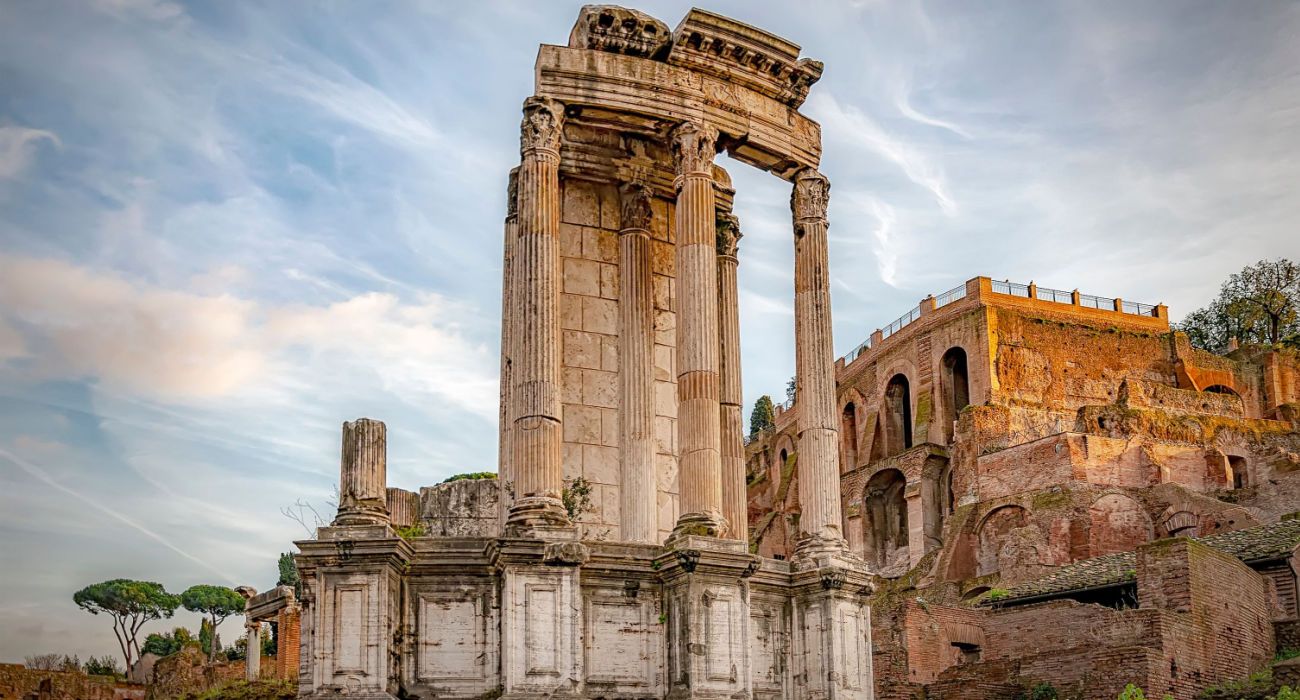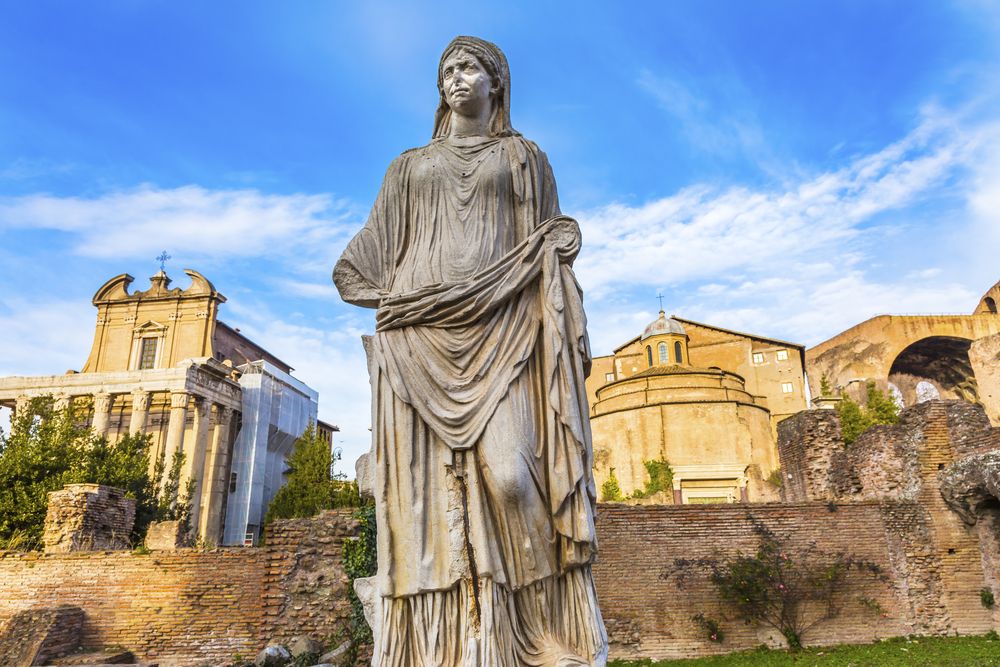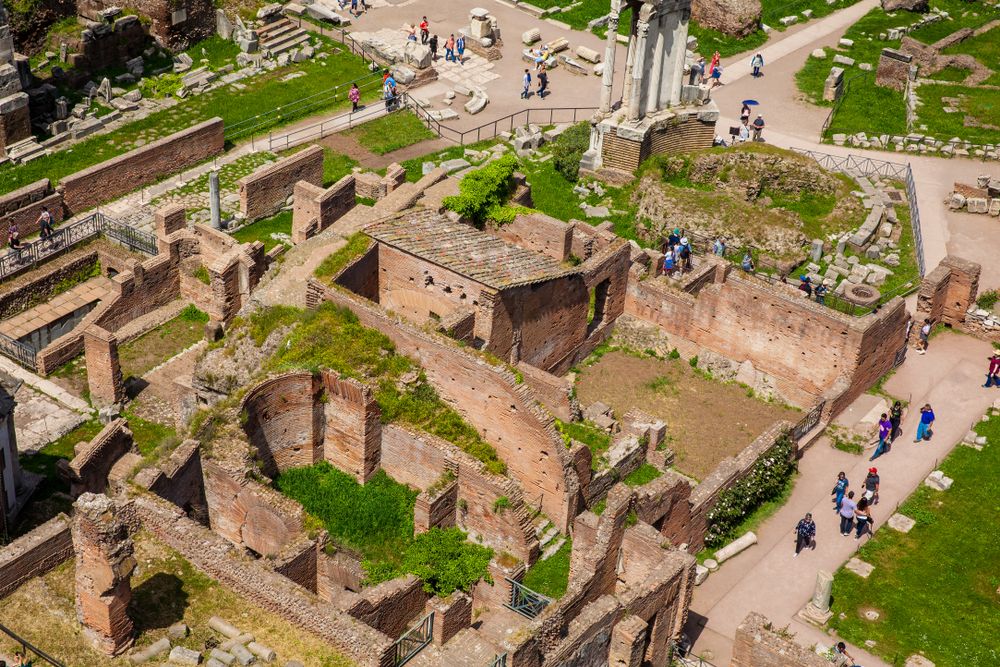Quick Links
The Eternal City ended up not being so eternal, and the eternal flame of Rome did go out. One of the best places to learn about the religion of Rome is the Temple of Vestal. At the time, it was one of the most sacred and spiritual places on earth. It is one of the key places to learn what life in ancient Rome was like.
To the Ancient Romans, the Vestal Virgins and the flame were important to their religion. The holy fire was a symbol of Rome's safety and prosperity. As the Temple of Vesta was not inaugurated, it was technically not a temple, but rather a 'sacred building' or shrine or sanctuary for the god to reside.
The Importance Of The Eternal Flame Of Rome & The Vestal Virgins
The origin of the worship of Vesta began in private homes, and the design of the temple appears to give homage to the architecture of older Roman homes. It was designed to imitate a primitive round hut. The temple housed a sacred hearth in a central cella and the Palladium (which was an effigy of Athena/Minerva). This was connected with the founding myth of Rome that they descended from the survivors of Troy.
The Vestal Virgins were the handmaidens of Vesta. It was their solemn duty never to allow the flame to be extinguished. The Romans feared that if the flame would be extinguished, then so too would the light of Rome. It would herald the imminent disaster of Rome. The Vestal Virgins were selected at the ages between 6 and 10, mostly from aristocratic families. They took an oath of virginity for their 30-year service. It was believed that if they broke their vows, it would spell disaster like military defeats and famine for Rome.
If the Vestals infringed on their duties only in a minor way, they could be whipped. For breaking their vow of chastity, live burial in a subterranean cell was the punishment. They were greatly respected and were given a generous pension.
Every year on the 15th of June, the ashes of the fire were ritually cast into the Tiber River.
What To Know About The Temple Of Vesta History & Facts
The history of the Temple of Vesta stretched back to the days of the Kings of Rome. At first, there were only two Vestal Virgins, but by the end of the Republic, there were six. Whereas Roman temples were mostly rectangular, the Temple of Vesta was round. It was also used to store the legal wills and other important documents of the Roman Senators. It was one of the first buildings of the Roman Forum (although it was destroyed a couple of times, so the building seen today was a later rendition). The ruins seen today date from when it was rebuilt by Emperor Septimius Severus.
The use of the Temple of Vestal eventually came to an end in the 4th century following the persecution of pagans by the Christians.
- Extinguished: The Sacred Flame Was Extinguished In 394 AD By Theodosius I
The temple managed to survive mostly intact through the Fall of Rome, the Dark Ages, and the Middle Ages, but it was finally demolished in 1549 AD for its marble to be used in churches and papal palaces. It seems all 'eternal flames' really do go out - just like the eternal flame of New York's Eternal Flame Falls also goes out.
What To Know About Visiting The Temple Of Vesta & The Roman Forum Today
Today visitors can still see the remains of the Temple of Vesta in Rome near where the Roman Forum once stood. The Temple of Vesta is found near the House of the Vestal Virgins. While the Temple of Vesta was not the largest temple in Rome (the largest was the Temple of Venus and Roma - and its ruins are still standing), it was still one of the most important in the city.
Visitors can discover what is left of the Temple of Vesta and observe its Greek architecture ad Corinthian columns (there were originally twenty Corinthian columns). The Temple of Vesta was completely stripped of its marble over time, and the section seen today was reconstructed in 1930. The reconstructed parts of the temple hint at what it was once like. Most of what is known of its former appearance comes from its depictions on ancient coins and art.
It is easy to get to the Temple of Vesta on foot when exploring the Roman Forum - the former beating heart of Rome.
Visiting The Roman Forum: Hours & Prices
- Opening Hours: 8:30 am until 7 pm
- Admission Fee: Adults €16 (US$ 17.10)
To access the Temple of Vesta, visitors need a ticket to the Roman Forum. Take the time to explore the many other Roman ruins found at the ancient forum.





